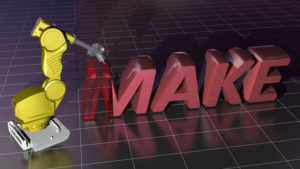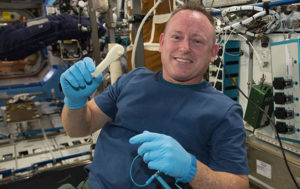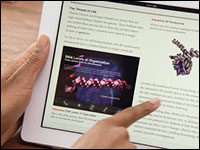The educational e-book market has grown fiercer in the last few years, raising the question of where the end game will leave educational institutions in their attempts to reduce student churn, increase productivity and radically reduce costs.
As the battling e-textbook giants try to cut exclusive deals and limit competitors’ supplies of e-content, educators from the kindergarten to university level are wondering if their choices of learning material will be choked as a result.
That concern is not unfounded considering that e-books are likely to outright replace paper textbooks in the next 36 months, according to Brian Kibby, president of McGraw-Hill Higher Education.
Within the next 12-18 months, entire departments at universities will have replaced paper textbooks completely, Kibby predicted, noting that the trend is already under way. If titans in the e-textbook market limit access to e-content as a means to harm their competition, a learning institution can find itself short of the course material it needs by virtue of choosing the “wrong” device or service.
Tablet vs. E-Reader
Amazon rents e-textbooks while Apple produces the software and service to create them, thereby providing the means to sidestep traditional textbook publishers. Both aggressively cut prices to the bone in an attempt to cripple their competitors.
Meanwhile, Barnes & Noble offers Nook Study, which rents and sells textbooks. The content available from each is not identical. Some books are available on one outlet and not another.
However, content on tablets tends to be of more concern to educators than that which is available solely for e-readers, and that has everything to do with how the devices are faring in the consumer market.
The more colorful, glitzy and versatile tablets are overcoming their drabber e-ink e-reader cousins. E-readers sales have slumped from 9 million units in late 2011 to a meager 2 million units in the first quarter of 2012, according to Digitimes Research.
That doesn’t mean, however, that e-readers are fading away or that educational institutions are turning away from them. Annual e-reader shipments will exceed 60 million units by 2015, the firm forecast.
Tablet Wars
In regard to tablets, the competition, while still fierce, looks to be almost at the point of crowning a winner.
Apple reasserted its dominance in the first quarter of 2012 with a staggering lead in iPad sales, claiming 68 percent of the tablet market, according to preliminary data from IDC’s Worldwide Quarterly Media Tablet and eReader Tracker.
Overall, tablet shipments tanked by 38.4 percent, mostly due to plummeting Android sales, although Amazon fared poorly too.
“Amazon, which stormed into the market in 4Q11 to grab second place with 16.8 percent of the market on shipment of 4.8 million units, saw its share decline significantly in the first quarter to just over 4 percent, falling to third place as a result,” reads the report. “Samsung took advantage of Amazon’s weakness to regain the number two position while Lenovo vaulted into the number four spot, followed by Barnes & Noble at number five.”
Microsoft almost fell off the shelf entirely in tablets, which limits its ability to carve much space in the textbook market — but the company is preparing to push back hard with Windows 8 and its touch-oriented Metro user interface.
“The worldwide tablet market is entering a new phase in the second half of 2012 that will undoubtedly reshape the competitive landscape,” said Bob O’Donnell, IDC program vice president, clients and displays.
“While Apple will continue to sit comfortably on the top for now, the battle for the next several positions is going to be fierce,” he said. “Throw in Ultrabooks, the launch of Windows 8, and a few surprise product launches, and you have all the makings of an incredible 2012 holiday shopping season.”
iPad Goes to Med School
To get a better feel for the effects of e-textbooks on student productivity, the Hofstra North Shore-LIJ School of Medicine’s Health Sciences launched an iPad pilot program and study.
With the aid of a US$10,000 Technology Improvement Express Award grant from the National Network of Libraries of Medicine, Middle Atlantic Region, Hofstra set out to determine the effectiveness of the iPad and apps as a tool for medical education.
The grant paid for 10 iPads and cases, along with textbook, productivity and medical applications. Ten out of the 40 first-year medical students and 10 out of approximately 30 faculty members involved in the Winter/Spring term received the devices.
In-person training and a support website were provided by the library staff. Some of the apps loaded on the iPads included textbooks not currently available via library subscriptions on various platforms; specific information-retrieval apps such as Pubmed on Tap, Micromedex and DynaMed; patient education apps; and a patient log app such as Drchrono, which served the students as a transportable Electronic Health Record.
“Students were eager to use iPad functionality as a collaborative tool in their case-based and self-directed learning, critical pathways in our integrated curriculum,” Debra Rand associate dean and director for health sciences libraries, told TechNewsWorld. “This grant-funded pilot study provided us with usage trends and the opportunity to obtain significant real-time feedback from students and faculty that will guide us in our future planning.”
How iPad Scored
The results of the 12-week pilot study were overwhelmingly positive from students and faculty alike. Students and faculty listed the iPad’s top strengths as portability, ease of accessing materials, and the note-taking and annotation capabilities. The top weaknesses noted by study participants were a “difficult to use” onscreen keyboard and the inability to use Flash content. Further, participants noted that the vendor feature allowing the purchase of chapters rather than an entire textbook was not useful.
The iPads were loaded with partial content of medical textbooks required in the school’s curriculum — some 20 chapters from five different textbooks for the purpose of this study. But most study participants said they preferred access to entire textbooks for reference purposes.
“Having access to textbooks and notes on the iPad facilitated productivity — not only in the classroom, but also on subway and train commutes,” Crystal Kyaw, one of the students who won a free iPad at the end of the Hofstra study, told TechNewsWorld. “Its sleek profile made it easy to carry and allowed me to access references in a nonobtrusive and convenient manner during meetings as well.”
But using iPads in medical school is not only beneficial to learning the material — it’s also preparation for real-world use in medical fields, a fact that further distances Apple from its e-textbook and tablet competitors.
Nearly three-quarters (74.3 percent) of the physicians participating in a study conducted by ON24 and MedData said they either owned or planned to buy an iPad in the next six months.
“We’re looking at a significant change in how doctors say they use and want to use virtual technology,” said Bill Reinstein, president and CEO of MedData Group, “and the results of the survey point to wider adoption and more meaningful use of online training anytime, anywhere.”
As to whether Apple will force med schools and doctors to use content that Apple provides or will be open to procuring content as the schools and physicians dictate is yet to be seen.






















































